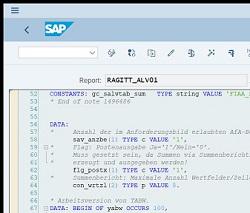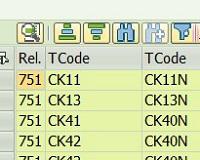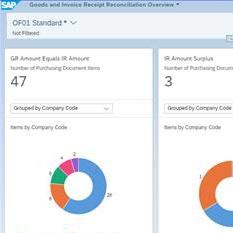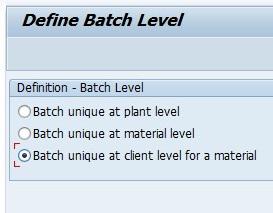How to learn SAP ABAP on HANA
by Ronak Hingorani
 The SAP HANA database (an acronym for High-performance ANalytical Appliance) is the most talked-about SAP innovation in recent times. It is a combination of Online Transactional Processing (OLTP) and Online Analytical Processing (OLAP). It is a platform that allows developers to innovate as they migrate to HANA and develop new solutions.
The SAP HANA database (an acronym for High-performance ANalytical Appliance) is the most talked-about SAP innovation in recent times. It is a combination of Online Transactional Processing (OLTP) and Online Analytical Processing (OLAP). It is a platform that allows developers to innovate as they migrate to HANA and develop new solutions.
ABAP on HANA
Most SAP products are moving to SAP HANA, and many new applications are now built on HANA as the primary database. While HANA serves as a replacement for traditional hard disk-based storage systems, it is more than just an alternative. While HANA can perform all features of a conventional DBMS, it also provides many benefits in real time that a traditional database server on SAP Netweaver cannot.
With this change, it is essential to understand and learn new techniques of in-memory, column-oriented, relational database, and improve the existing ABAP-based application using the SAP ABAP on HANA programming language. In simple terms, SAP ABAP on HANA is nothing but ABAP development using the full capability of the SAP HANA modelling database.
Object-Oriented ABAP Programming
SAP development using ABAP has seen changes in the past with the evolution of Object-Oriented ABAP Programming. With SAP ABAP on HANA release 7.40 and 7.50, several new ABAP language elements have been introduced. If you are a technical SAP consultant who started leaning ABAP, we highly recommend you learn more about Object-Oriented ABAP Programming by accessing this step by step ABAP Programming Best Practices.
This ABAP training course will not only help you understand ABAP transitions from classic ABAP programming to the newer ABAP Objects programming style but will also focus on best practices for writing SAP ABAP source code using ABAP tools and frameworks. This training has proven to be the best foundation for SAP ABAP on HANA.
Transitioning from Classical ABAP
While the transition from classical ABAP to ABAP on HANA is not to difficult to understand as the rules for SQL programming are still valid to SAP HANA, there is just a change in priority of applying rules, and that’s precisely what the course focuses on.
For instance, if a CDS view is created using ABAP on HANA, it can be viewed in SE11 and used in the ABAP program the same as in the classical view. Also, a CDS view can be exposed to non-ABAP applications as well.
ABAP on HANA Training
The training focuses on new advancements in HANA and HANA Database. It familiarizes developers with the difference between Data to Code (classical ABAP) vs. Code to Data (latest HANA Approach) paradigm. In the traditional approach of Data to Code, a vast amount of data is fetched from the database and then processed on the application server using internal tables.
At the same time, code push-down or Code to Data involves moving data-intensive calculations to the database and avoid unnecessary movement of large data volume. The training begins with basic concepts such as SAP HANA Column Store, Data Compression, Insert-only concepts, which acts as the backbone of HANA for ABAP. These techniques are responsible for faster data retrieval and low memory usage. It will also provide in-depth technical insight on core ABAP on HANA features like:
- new syntax
- a new data modeling infrastructure called Core Data Service (CDS)
- a new way of using a native scripting language like HANA SQL Script called ABAP Managed Database Procedures (AMDP)
- an API for native SQL called ABAP Database Connectivity (ADBC)
- a method similar to classical ALV with pagination features called ALV IDA
- Open SQL and Performance Tuning.
Advanced ABAP on HANA Tools
CDS, AMDP, ADBC, and OpenSQL, are more advanced ABAP development tools and ways of coding using tools like Eclipse or SAP HANA studio, which are environments for HANA administration, modeling, and data provisioning. These concepts help developers to logically separate data retrieval.
It is also essential to know that SAP is data agnostic, and existing ABAP code is still valid for the new HANA database except for Native SQL statements in the code, DB specific hints, and implicit DB sorting. This sounds complex, but SAP has incorporated all these checks as a part of the integrated Code Inspector (SCI).
The SAP HANA system is also capable of atomically determining performance issues in code via standard transactions like SQL Performance Tuning Worklist (SWLT), SQL Monitor (SQLM), and SQL Trace (ST05). An introduction to these ABAP on HANA features can be found in this course: Introduction to ABAP 7.4 in S/4HANA.
Watch this short intro lesson:
Who Should Learn ABAP on HANA
ABAP on HANA training is best suited for ABAP Application Developers, Development Consultants, and ABAP Architects who are currently transitioning from ECC to S4HANA. They are building applications using traditional ABAP and would like to use the cutting-edge ABAP on HANA in-memory capabilities instead. Using ABAP on HANA, developers can not only build scalable solutions but also ensure the best HANA database utilization.
This approach leads to fast and high response applications/reports. Moreover, this adoption of new ABAP on HANA skills will also make you a knowledgable asset in your team. According to the Dice Salary Survey, SAP HANA professionals are earning average salaries of $154,759 annually. The same is reported in the blog published SAP - How Different Professionals Can Boost Their Career By Learning SAP HANA.
ABAP on HANA concepts are not only limited to database development but are also extended to UI5/FIORI development. For instance, a CDS view can be exposed as an OData service and used as a web application. To explore such innovations by SAP, it is crucial to understand and use the above features like CDS, AMDP.
If you are new to SAP ABAP programming, we recommend you take a look at these ABAP courses to get you started:
SAP ABAP Intro to Editing & Operators
SAP ABAP Working with Data Basics
by Ronak Hingorani
More Blogs by Ronak Hingorani

RESTful ABAP Programming Model (RAP)
Introduction The programming language for SAP, ABAP (Advanced Busin...

SAP WebIDE Full-Stack Edition Setup and Configuration
Introduction SAP WebIDE is a powerful, extensible, web-based integr...

SAP WebIDE Personal Edition Setup and Configuration
Introduction SAP WebIDE is a web-based development tool to build SA...
Related Blogs

How to find obsolete transactions in S/4HANA
Many transactions have been deprecated in SAP S/4HANA from ERP6.0. In ...

How Does the GR/IR Process Work in S/4HANA and Fiori?
When looking at how the GR/IR (goods receipt/invoice receipt) pro...

SAP Batch Management Functionality and Configuration
My Batch number was ‘07C’ when I was in college. There were...
.png)

